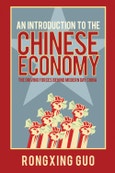Table of Contents
List of figures.List of tables.
List of abbreviations.
Acknowledgments.
Notes from the author.
Chapter 1: A brief history of China.
The origins of the nation.
Rise and fall of the empire.
China in the new millennium.
Chapter 2: Spatial and administrative divisions.
Administrative divisions.
Great regions.
Geographical belts.
Southern and northern parts.
Ethno-cultural areas.
Chapter 3: The foundation of the Chinese economy (I).
Land and water.
Minerals and energy resources.
Environmental quality.
Policy implications.
Chapter 4: The foundation of the Chinese economy (II).
Population.
Labor and education.
Technological innovation.
Cultural influence.
Chapter 5: Political and economic systems.
Party versus state.
State and market.
Market-oriented reform.
Enterprise management.
Finance and banking.
Future perspective.
Chapter 6: Economic growth and social justice.
Economic growth.
Regional economic differences.
How (un)equal is the Chinese society?
Poverty and social security.
Chapter 7: International economic engagement.
Historical background.
China opens its door.
Foreign direct investment.
Foreign trade.
Chapter 8: Studying Chinese economics: Key issues.
Why China has a collectivistic culture.
Why China adopted a gradual economic reform.
Why the Chinese economy cannot be spatially optimized.
Why China’s long-term growth isn’t sustainable.
Appendixes.
A historical chronology.
China’s cultural similarity with your country.
Bibliography.
Index.
Samples

LOADING...








